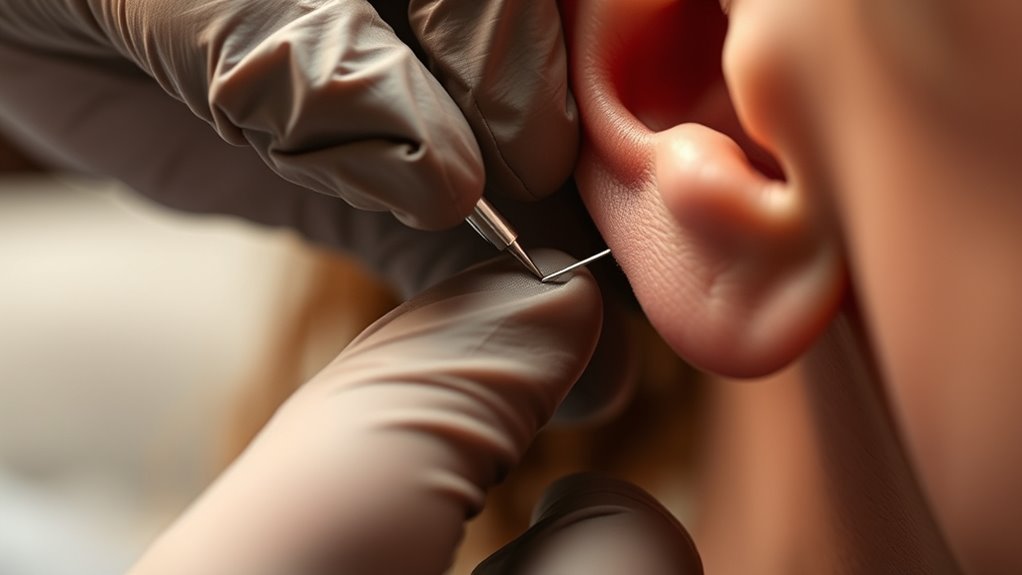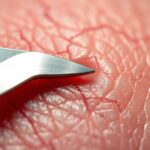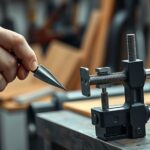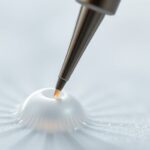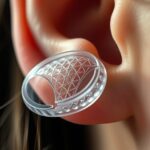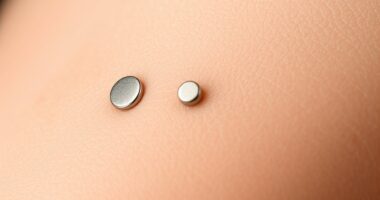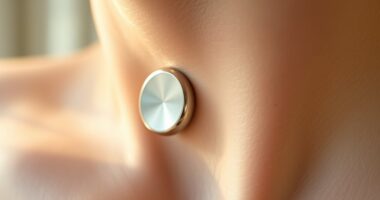To achieve precision in intricate piercings, master advanced needle techniques like stabilization methods, careful angle control, and slow, confident insertion. Use tools such as curved or specialized needles to improve accuracy and reduce tissue trauma. Pre-mark your site for symmetry and double-check alignment throughout the process. Focusing on anatomy and controlled movements will help you minimize complications. Keep developing your skills to learn even more about these techniques and guarantee safe, precise piercings.
Key Takeaways
- Utilize curved or specialized needles to improve control and precision during complex or delicate piercings.
- Pre-mark the piercing site accurately to ensure symmetry and proper alignment before needle insertion.
- Maintain steady, confident insertion speed to minimize tissue trauma and ensure clean punctures.
- Employ stabilization techniques, such as needle cradling, to enhance control and accuracy throughout the process.
- Select appropriate needle gauge and type based on the specific piercing location and desired outcome.

When it comes to getting a piercing, the technique used can considerably impact both the safety and success of the procedure. A vital aspect of this technique involves understanding sterilization methods and needle gauge selection. Proper sterilization is non-negotiable; using autoclaves or other high-level sterilization methods ensures that all tools, including needles, are free from bacteria and pathogens. This step minimizes infection risks and promotes healing. Always verify that your piercer adheres to strict sterilization protocols before proceeding. Equally important is choosing the right needle gauge, which directly influences the precision and outcome of the piercing. Thinner needles, such as 20 or 22 gauge, are typically used for delicate piercings like the earlobe, providing clean, precise punctures with minimal trauma. Conversely, thicker gauges, like 16 or 18, are suitable for more robust piercings, such as cartilage or industrials, where strength is essential. The correct gauge ensures that the piercing heals properly and reduces complications like tearing or rejection.
Advanced needle techniques also involve understanding the anatomy and the specific piercing site. Skilled piercers often utilize needle cradling or stabilization methods to maintain control during insertion. This means holding the needle steadily and aligning it carefully with the intended piercing point, which requires both experience and a keen eye for detail. The use of a sterile, single-use needle minimizes cross-contamination and ensures each piercing is performed under hygienic conditions. The choice of needle type matters too—straight, hollow, or curved needles are selected based on the piercing location and desired outcome. For example, curved needles may be preferred for certain facial piercings because they allow more control and reduce tissue trauma. Additionally, understanding sterilization procedures and their importance helps prevent infections and ensures a safe piercing process.
Furthermore, precision in technique extends to the angle and speed of insertion. A steady, confident motion, combined with the right needle gauge, reduces pain and tissue damage. Some advanced techniques involve pre-marking the site to ensure symmetry and accuracy, especially for complex or asymmetrical piercings. Post-piercing, the focus shifts to cleaning and aftercare, but the foundation of a successful piercing rests on the initial technique. Proper sterilization, selecting the appropriate needle gauge, and applying advanced insertion methods all work together to create a safe, clean, and precise piercing experience. When you understand and appreciate these technical details, you’re more likely to achieve a healing process that’s smooth, quick, and free from complications.
Frequently Asked Questions
What Are the Latest Innovations in Piercing Needle Technology?
You’ll find that smart needle innovations and ergonomic piercing tools are revolutionizing the industry. These advancements allow for more precise and comfortable piercings, reducing tissue trauma and improving healing times. Smart needles incorporate sensors to guide placement, while ergonomic tools help you maintain better control and reduce fatigue. Staying updated with these innovations guarantees you deliver safer, more accurate piercings, enhancing client satisfaction and your professional expertise.
How Do Needle Techniques Vary for Different Piercing Sites?
You’ll adjust your needle techniques based on the piercing site, considering site-specific adjustments and anatomical considerations. For example, cartilage piercings require a slower, more precise approach to avoid damage, while soft tissue piercings need careful needle control to prevent tearing. Understanding each site’s unique structure helps you choose the right angle, depth, and needle size, ensuring a safe, accurate piercing experience tailored to the individual’s anatomy.
Are There Specific Needles for Hypoallergenic or Sensitive Skin?
If you have sensitive skin, you’ll be glad to know that there are hypoallergenic needles designed specifically for you. These needles minimize irritation and are crafted from materials like surgical-grade stainless steel or titanium. When considering sensitive skin considerations, always ask your piercer about using hypoallergenic needles to guarantee a smooth, comfortable experience. Your skin deserves the best, and choosing the right needle can make all the difference in your piercing journey.
How Does Needle Gauge Affect Piercing Outcomes?
You’ll notice that needle gauge, which indicates thickness, directly affects your piercing outcome. A smaller gauge means a thicker needle, creating a larger hole, which can influence healing time and the final look. Conversely, a larger gauge results in a thinner needle, potentially reducing healing impact and scarring. Choosing the right gauge guarantees better precision, quicker healing, and less discomfort, so trust your piercer to select the appropriate needle for your specific needs.
What Safety Protocols Are Critical During Advanced Needle Procedures?
During advanced needle procedures, you must prioritize safety protocols. Make certain you maintain a sterile environment by thoroughly disinfecting all surfaces and tools. Always verify needle sterilization to prevent infections. Wear gloves, use sterile drapes, and avoid contamination by handling equipment properly. Keep an eye on your client’s comfort and response, and have emergency supplies ready. These steps help protect your client and ensure a successful, safe piercing experience.
Conclusion
So, after all these advanced needle techniques, you might think piercing is just a simple prick. Ironically, it’s the precision and skill behind the needle that truly make the difference—yet, many still overlook the importance of proper technique. Remember, a perfect piercing isn’t about luck; it’s about mastery. So next time you get pierced, appreciate the art behind the needle, because sometimes, it’s the careful work that leaves the biggest mark.
Piecing together a life one day at a time, that’s me. I’m Rusty, and I love being editor-in-chief of creative piercing. It’s my passion to help others see their vision and bring it to life. When I’m not working or taking care of my family, you can find me reading a good book or eating pie (of course!).

